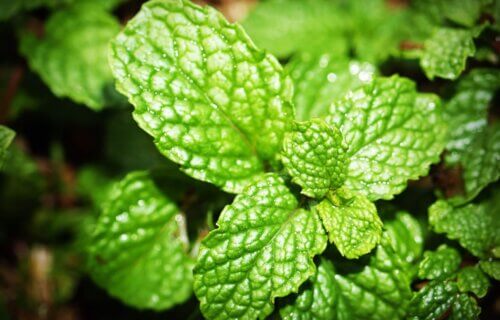EAST LANSING, Mich. — A genetic goldmine in mint leaves could the hold the key to future (and fresh-smelling) medicines and pesticides, a new study reveals. This family of herbs includes more than just mint. It also includes sage, rosemary, basil, and even woody plants like teak. Along with jolting our senses of smell and taste, a team from Michigan State University says, thanks to evolution, this plant family now contains genes which can benefit human health in various ways.
“People easily recognize members of the mint family for their specialized metabolites,” explains Björn Hamberger, an associate professor and James K. Billman Jr., M.D., Endowed Professor in the College of Natural Science, in a university release. “Metabolites are an efficient way for plants to defend themselves because they can’t run away.”
“Over millions of years, plants have adapted and evolved for their particular niches where they thrive, and that means that these chemistries are diverse and have clearly adjusted to their environment,” Hamberger adds. “So, we try to identify and discover pathways to these specialized metabolites that plants make.”
Hamberger has been studying these metabolites, which scientists call terpenoids, since 2016. They are essential for protecting plants from both predators and viruses. In terms of our everyday lives, manufacturers use terpenoids in eco-friendly agrochemicals, antioxidants, cosmetics, and perfumes.
What’s hiding in the mint genome?
Working with Robin Buell, a former MSU genomics researcher now at the University of Georgia, Hamberger’s team sequenced the genome of several mint plants. They discovered that the mint family has evolved over the last 60 to 70 million years, with many varieties now containing a large biosynthetic gene cluster.
A BCG is a group of genes sitting close together in the plant’s genome that take part in the same metabolic pathways. Researchers compare these genes to a pearl necklace, where all the pearls are separate but still connected. Researchers Abigail Bryson and Emily Lanier found this BCG in the beautyberry genome and six other species within the mint family.
“We are learning that the physical location of genes within the genome is important,” Bryson says. “It can drive evolution of specialized metabolic pathways in the plant, leading to a vast diversity of interesting natural plant compounds.”
BCGs are a common sight in the bacterial world, but researchers say their role in plants is still unclear. The new study found that the BCG cluster in the beautyberry plant carries genes which encode two distinct terpenoid pathways. The terpenoids build up in multiple areas of the mint plants, including the leaves and roots. Study authors believe these metabolites may play a key role in how these plants adapt to their environment.
“It’s the same base molecule, but each species is making its own version and modifying it in different ways to fit their survival needs,” Lanier explains.
What can scientists do with mint genes?
Previous studies have been able to turn mint plants into useful medicines, like Indian Coleus, which is now a natural treatment for glaucoma. Hamberger’s team says their genetic findings open the door to even more medical breakthroughs, from new medicines to pesticides to antimicrobials.
“Our team has been excited about the opportunities within the mint family,” Hamberger concludes. “Those mint enzymes, as in the American beautyberry plant, give us the ability to make plant-natural products in the lab, including — hopefully in the future — natural good-smelling mosquito repellants.”
The study is published in the journal Nature Communications.

